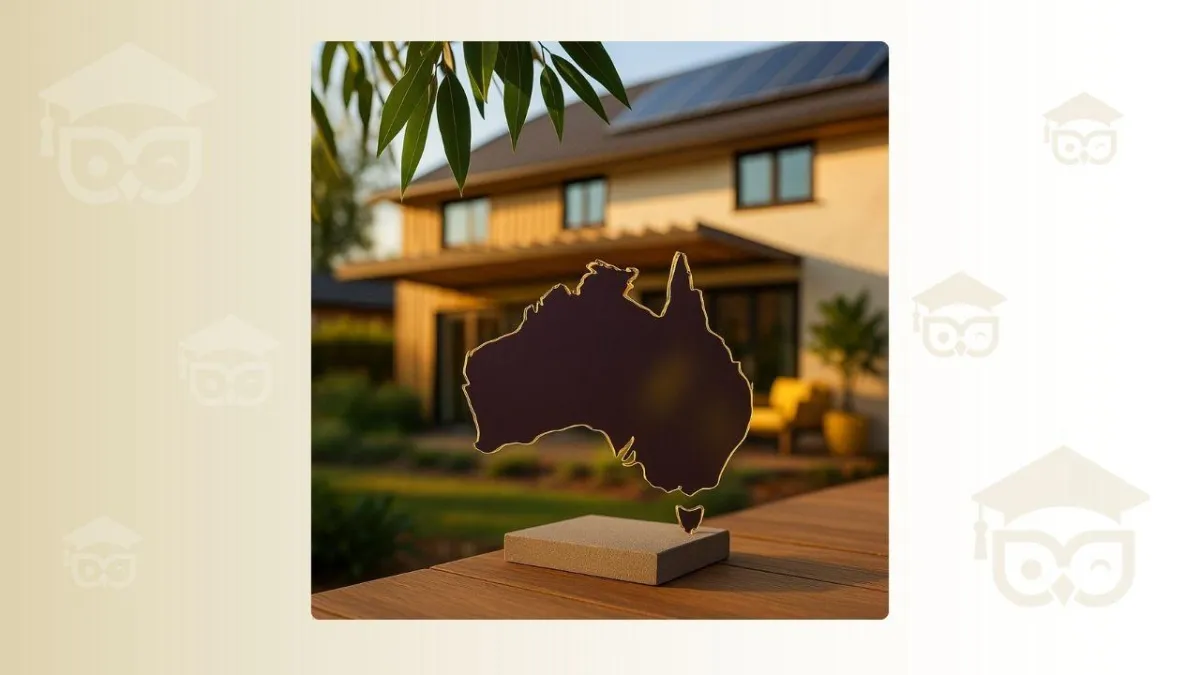
PHW 007 - Passivhaus in Australia
Your Quick Win Summary
Started by a small group of pioneers, the Passivhaus movement has reshaped Australia's approach to sustainable buildings.
Choose How You Want to Learn:
Flexibility for different learning styles: all blocks optional, use one or all, you choose.
🎧 Listen on the Go:
Audio version for your commute
☕ Coffee Chat with Your Mentors:
Join senior trainers Julia and Daniel as they share insider tips you won't find in textbooks. Real talk about what actually works on-site.
🎙️ Hear It From Aime & Aiden
Our AI podcast hosts break this down into bite-sized insights. Perfect for your morning walk.
Passivhaus in Australia
You Can Master Passivhaus in Australia
Here's How 15 Years of Success Proves It
Remember when nobody knew what Passivhaus was in Australia? That was just 15 years ago. Today, you're part of a growing movement that's transforming how we build.
A handful of pioneers, like engineer Clare Parry for example, didn't just dream about better buildings. They founded the Australian Passive House Association and proved Passivhaus works in our challenging climate.
Those early pioneers opened the door. We walked through it, and built our lives around Passivhaus. What began as a few bold experiments has become full‑time professions, thriving businesses, and a growing community of experts. Passivhaus education is not our side project; it’s what we do, every day, full‑time, because it works.
If we can make a living purely from Passivhaus education, you can absolutely build yours through Passivhaus design, construction, or consulting. You can do it, and the demand has never been greater.
Your Colleagues Are Already Doing This
Pages Flat House in SA started it all. That first certified project showed you could achieve year-round comfort with the right approach. Think of airtightness like sealing a thermos, your building holds its temperature naturally.
Since then, your peers have delivered Passivhaus across every state and climate:
Victoria leads the charge.
Monash Gillies Hall proves student housing can be comfortable and efficient. The Fern and Echo townhouses show multi-residential works brilliantly. Clifton Hill Primary's senior campus? Kids learn better in stable temperatures. Glenroy Community Hub brings the community together in comfort.
Other states are catching up fast.
Torrens Early Learning Centre in ACT keeps toddlers healthy year-round. Social housing in Sunshine, VIC? Residents pay 90% less for heating and cooling.
Building physics confirms what these projects prove: stable temperatures, clean filtered air via HRV, minimal energy demand, and zero mould issues. That's not magic, it's science you can replicate.
Your Clients' Questions, Answered Simply
"What exactly is Passive House in Australia?"
You're creating buildings that practically heat and cool themselves. The performance standard limits energy demand to almost nothing. Your blower-door test proves the building is airtight (like checking a balloon for leaks). Thermal-bridge-free detailing stops heat sneaking through. Balanced mechanical ventilation keeps air fresh without losing comfort.
"Does Passivhaus work in our hot, humid climate?"
Absolutely. You'll use external shading like a wide-brimmed hat for your building. Solar control glazing (g-values) blocks unwanted heat. Summer bypass mode lets cool night air flow through. When humidity strikes, your system handles it automatically. Think of it as giving your building its own climate control intelligence.
"Do I need expensive triple glazing everywhere?"
Not always. You'll specify based on orientation and climate, like choosing the right tool for each job. PHPP calculations show you exactly what's needed. No guessing, no overspecifying.
"How does this compare to 7-Star NatHERS?"
NatHERS is a policy tool for minimum compliance. By design, it’s approximate.
It allows simplified inputs (e.g., one standard window value) that ignore real variation.
The physics isn’t wrong; the regulatory shortcuts are.
That can create errors of up to 300% versus measured performance.
PHPP (the Passivhaus tool) is built for design and verification.
It typically predicts within ~5% of reality. Use both together: NatHERS for compliance; PHPP for performanceand economiucal optimisation.
Actual energy still depends on user behaviour. Occupants can double use, halve it, or approach zero with renewables.

The Money Question You're Thinking
“What’s the real cost in Australia?”
Early projects had a learning premium. Today, experienced teams deliver single-digit premiums. Most projects land under 10%. Clients save 80–90% on heating and cooling energy, forever. Smaller mechanical systems cost less upfront. Buildings last longer with less maintenance.
For developers, ROI shows in tenant retention and premium rents. Homeowners get lower bills and healthier air—try pricing your family’s health. Governments hit net-zero targets faster and reduce fuel poverty. Everyone wins.
Now the blunt numbers:
Additional costs are usually under 10%. The price premium is 14.5%. That’s a 45% ROI if you pay 10% and get 14.5% back. Source: Domain Sustainability in Property 2025 (Australia).
Passivhaus is not expensive; it’s the solution. The value generated is bigger than the investment. With smart financing like green loans, you can bring the financial burden down to zero from day one and increase the property value by 14.5%.
It is your choice to live in a tent during winter and in a pizza oven during summer, or in a comfortable, healthy home all year long. The choice is yours.
Your Existing Buildings Aren't Left Behind
EnerPHit, the Passive House retrofit standard, transforms tired buildings. You'll prioritise airtightness (seal the leaks), continuous insulation (wrap it like a warm jacket), high-performance windows, and proper ventilation.
This works for brick veneer, weatherboard, even heritage buildings. Plan it detail-by-detail. Phase it to match budgets. Stop mould forever. Your retrofit clients will thank you.
Your State Is Already Moving
Forget the old state rivalries, this is a race where everyone wins. Victoria's schools are multiplying faster than coffee shops in Melbourne. NSW pioneers tackle bushfire zones with BAL-rated designs. Queensland proves airtight buildings breathe beautifully while slashing cooling loads. Perth architects master hot-dry climates with night purging magic. SA keeps expanding from that first certified home. ACT hits Premium levels in government buildings. Even Tasmania's cold zones and NT's tropical challenges become opportunities for smart teams.
The movement isn't coming... ...it's here. Your competitors are already learning this.
Why You Should Choose Passivhaus Now
Here's what your competitors don't want you to know: The NCC 2025 changes mean energy performance requirements are tightening dramatically. While others scramble to meet new standards, you'll already exceed them. While they struggle with compliance documentation, you'll breeze through with proven Passivhaus methodology. While they face callbacks and defects, your projects will perform exactly as promised.
Your clients expect healthier, future-proof buildings, you can deliver them. Insurers and banks favour proven performance, easier approvals for you.
For your practice, Passivhaus means measurable outcomes and fewer defects. Clearer project scope means fewer variations. Fewer callbacks mean better profits. It's strategic business sense that puts you ahead of the compliance curve, not chasing it.
How Passivhaus HUB Gets You There
We deliver industry-specific Passivhaus training in Australia. Designer courses, Tradesperson certification, PHPP mastery, advanced detailing, whatever you need. Product guidance means honest advice. Construction checklists prevent mistakes. Blower-door coaching ensures success.
Upskilling your team? Enrol your lead architect or engineer in our FREE Passivhaus Designer Starter KIT.
The Movement You're Joining
What began with a few determined people and one farmhouse has turned into a nationwide movement. And while Passivhaus hasn't yet become code, its fingerprints are everywhere, from higher energy standards in the National Construction Code to new financing models being developed by banks eager to back resilient, efficient buildings.
Australia's Passivhaus story is still being written. The next chapters will see more schools, more affordable housing, and more commercial buildings following the path. Will it be written by you?
But the heart of the story is simple: a group of pioneers proved that Australians deserve better buildings,and once people step inside a Passivhaus, they don't want to go back.
Your successful Passivhaus project starts today.
_____________________________________
Next time: Learn why airtightness is about preventing unwanted air leaks, while ventilation is about ensuring healthy, fresh air—two sides of the same coin in Passivhaus design.
[Join Passivhaus Weekly →] Tuesday insights, five formats, zero fluff
📚 Resources to Support Your Journey
📥 Downloads
[Passivhaus in Australia book] - The Passivhaus solution from an Australian standpoint
[PHPP v9.6 — ASHRAE 140 Validation (PHI)] – Independent BESTEST summary showing PHPP’s accuracy against standard cases. Useful when clients ask for “proof”
[PHPP — validated and proven in practice (EU BUILD UP)] – Plain-English overview of PHPP with measured-vs-model graphic. Good explainer for non-modellers.
[Domain Sustainability in Property 2025] – Australian market data on value uplift for efficient homes. Houses show ~14.5% premium; supports ROI framing.
📅 Next Courses Starting Soon
Passivhaus DESIGNER Course - Start: [Tuesday, 14. October 2025] - Start Today
Passivhaus TRADES Course - Start: [Tuesday, 28.October 2025] - Start Today
📞 Ready to Get Certified?
If you’re serious about becoming a Passivhaus Designer or Tradesperson, let’s map your path. Book a free 15-minute consulting call with our trainers and get clear on:
Which course is right for you.
How to start today to prepare for certification success.
[Book My Free Consulting Call]
💬 Join the Conversation
LinkedIn | Instagram | YouTube
Remember: You've got this. Passivhaus isn't complicated - it's just good building science made simple.
